Last Chance to Catch NYC's Holiday Notalgia Train
We met the voices of the NYC subway on our nostalgia ride this weekend!


In June 2015, the Stonewall Inn was designated an individual New York City landmark within the historic district of Greenwich Village. The designation was particularly notable from a social and historical perspective since it was generally acknowledged that the site was not architecturally or aesthetically distinguished – a clear gesture to landmark the history behind the building. Since the designation of Stonewall, the Landmarks Preservation Commission has designated many other LGBTQ+ landmarks for their historical significance. In honor of Pride Month, we highlight 10 LGBTQ+ landmarks in New York City in the list below!
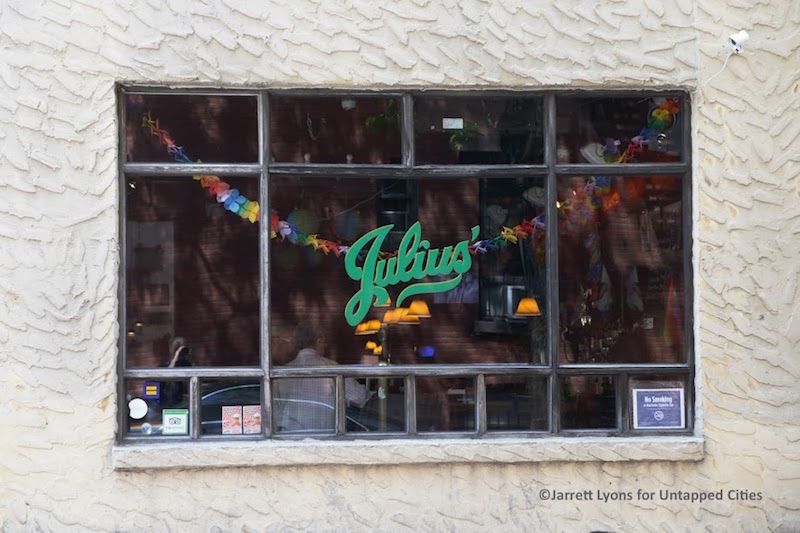
Julius’ Bar, a few blocks away from the Stonewall Inn, identifies itself as the oldest gay bar in New York, though it hasn’t always been a haven for gay people. In 1966 activists staged a “sip-in” to protest harassment from bartenders and their refusal to serve homosexuals. The protest effectively established gay bars in New York.
Governor Andrew Cuomo recommended Julius’ be added to the State and National Register for Historic Places in 2016. Julius’ historical significance to the LGBTQ+ was not mentioned in the Greenwich Village Historic District designation, which was adopted a few months before the Stonewall Riots. In December 2022, Julis’ Bar, which is one of the oldest bars in Greenwich Village, became one of the newest LGBTQ+ landmarks in New York City when it was officially designated as an individual landmark.
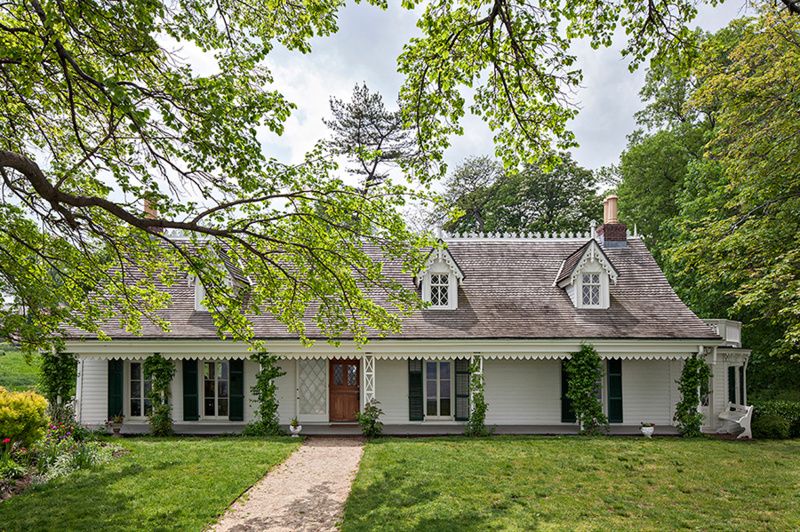
Clear Comfort, one of the oldest buildings on Staten Island, was the charming 19th-century home of photographer Alice Austen. Alice moved into this 1690s Dutch farmhouse with her mother in the 1860s. It was in this home that Austen discovered and nurtured her passion for photography and lived happily with her lover Gertrude Tate until the Great Depression.
Today, the house serves as a museum where visitors can learn about Austen’s life and work. The allegedly haunted house was designated as a New York City Landmark in 1971, though there is no mention in the designation report of Austen’s connection to the LGBTQ+ community. The site was designated a National Site of LGBTQ History in 2017.
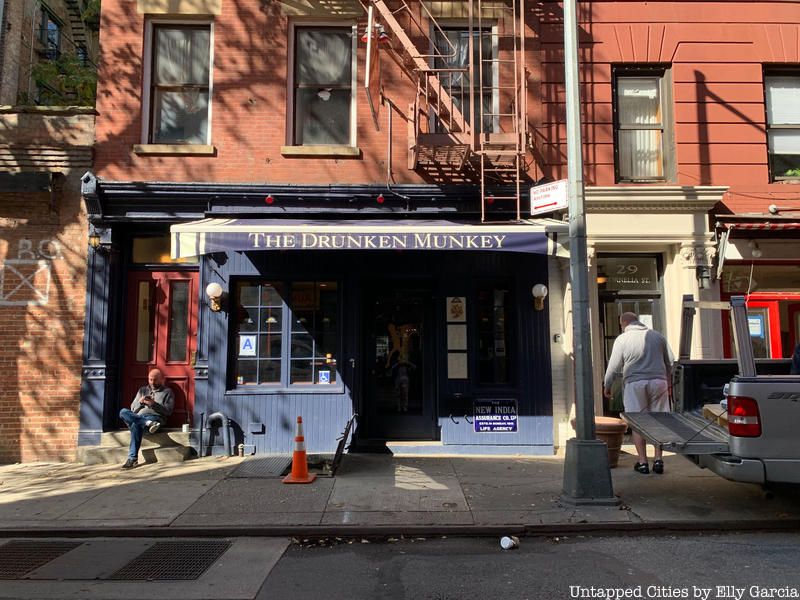
Caffe Cino was one of six LGBTQ+ landmarks that were designated in 2019. Located at 31 Cornelia Street in Greenwich Village, the site is considered to be the birthplace of Off Off Broadway. In 1958, Buffalo transplant Joseph Cino opened the coffee house and began presenting plays at his Cornelia Street “on a whim,” while also displaying his friends’ artwork in the space and hosting poetry readings. Notable playwrights and artists like Edward Albee, Sam Shepard, Bette Midler, Al Pacino, and Bernadette Peters often hung out at the cafe.
A year after Cino tragically committed suicide in 1967, the cafe closed. Located on the first floor of a tenement building, the former cafe has been various types of businesses since then. You can visit this location on Untapped New York’s Greenwich Village Coffee Tasting Tour!
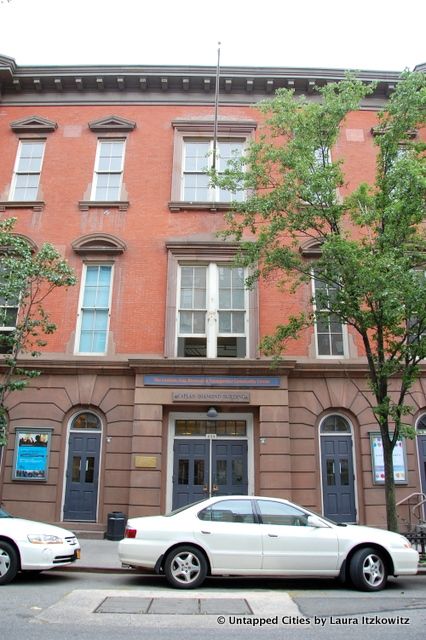
Now known simply as The Center, the Lesbian, Gay, Bisexual, and Transgender Community Center located at 208 West 13th Street in Greenwich Village was, and continues to be, an important non-profit space that supports the LGBTQ+ community. The building that house The Center was a schoolhouse constructed in 1844. Neglected and in need of a new purpose by the 1970s, it was decided that the derelict structure would be auctioned off to a non-profit. In 1983, the newly formed Lesbian and Gay Community Services Center was incorporated and acquired for $1.5 million.
The Center was founded at the height of the AIDS crisis and served as a safe place for members of the LGBTQ+ community to seek support. In 1988, the Center started an art program through which 50 artists were invited to create site-specific works. One of the most famous works created was a mural by Keith Haring. Located in the second-floor men’s room, the mural, titled Once Upon a Time, was completed just six months before Haring’s death. The Center underwent a major renovation in 2001 by the female-led firm of Françoise Bollack Architects and another renovation in 2014 by RSVP Architecture Studio and N-Plus Architecture and Design. The Haring mural survived the changes to the building and can still be seen today. Today the Center offers a variety of services including substance abuse treatment, HIV/AIDS support, career planning, family services, lectures, performances, and art shows. It was designated an individual New York City Landmark in 2019.
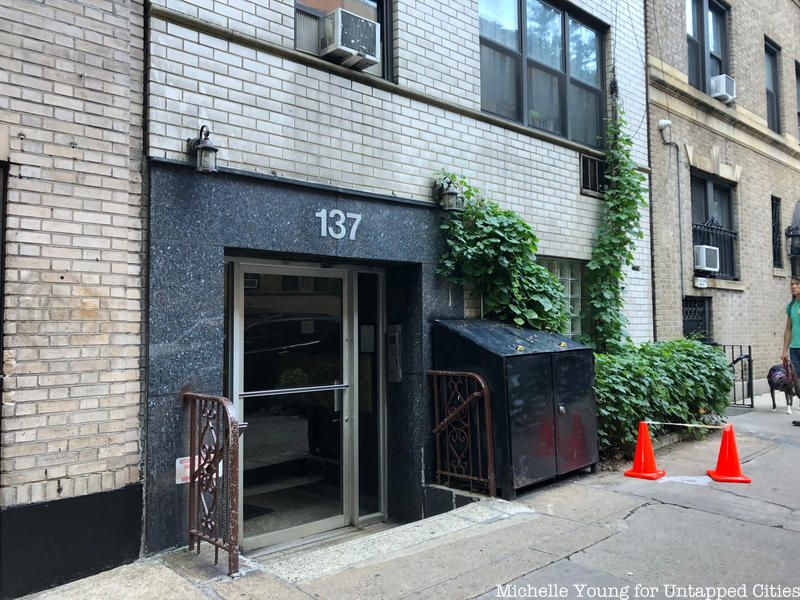
James Baldwin was an African-American author and social critic whose novels caused controversy for their homoerotic content and exploration of racial identity. He lived in multiple residences in the West Village Historic District and the Upper West Side/Central Park West Historic District at different points in his life. Baldwin lived at 81 Horatio Street in the West Village in the late 195os through the early 1960s.
In 1965, Baldwin bought a row house at 137 W 71st Street. He lived in this building from 1966 until his death in 1987. This home, in which he wrote works like Tell Me How Long the Train’s Been Gone (1968), If Beale Street Could Talk (1974), and No Name in the Street (1972), was designated an individual landmark in 2019.
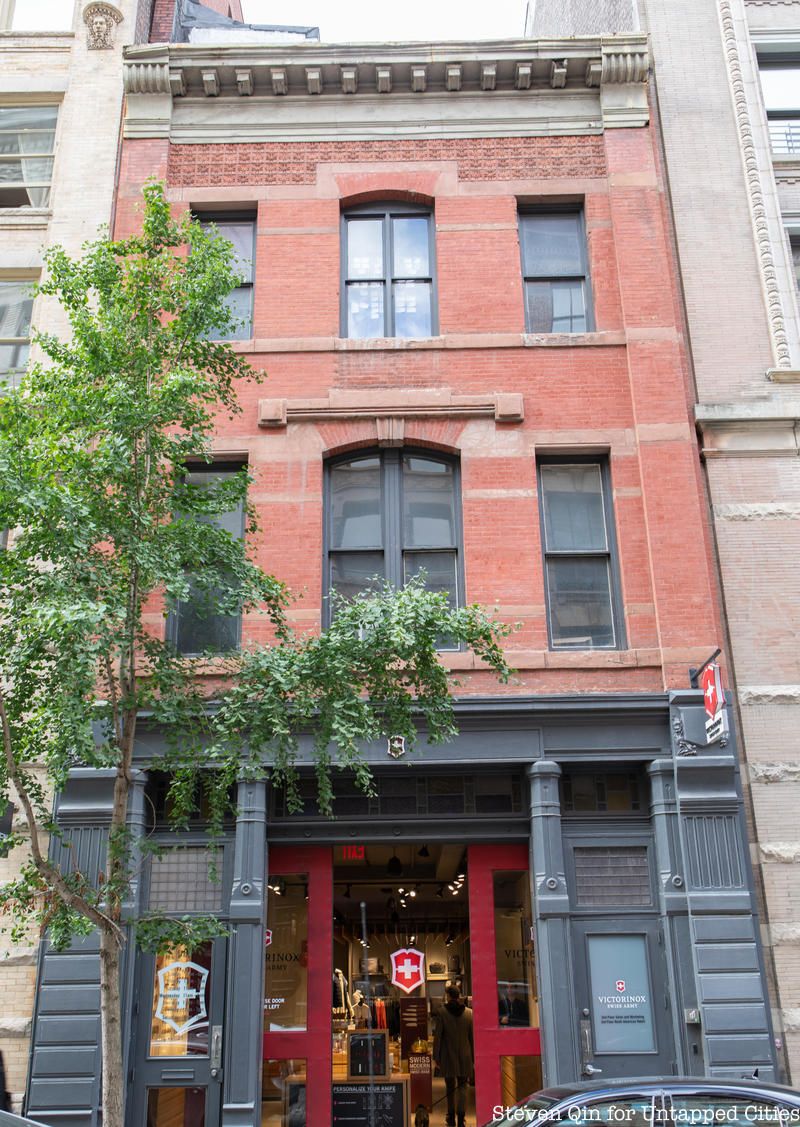
The Gay Activist Alliance was housed at this former firehouse at 99 Wooster Street in the SoHo-Cast Iron District from 1971 to 1974. The alliance mobilized and lobbied for gay civil rights. Their famous tactic, “zap” actions, were direct actions intended to garner media attention for their causes. The Gay Activist Alliance Firehouse became a kind of community center, hosting meetings and parties while it was housed there.
While the firehouse at Wooster Street is listed specifically in the historic district report as a place of significance, it was not listed for its LGBTQ+ significance. It wasn’t until 2019 that the building was designated as an individual landmark for its role in LGBTQ+ history.
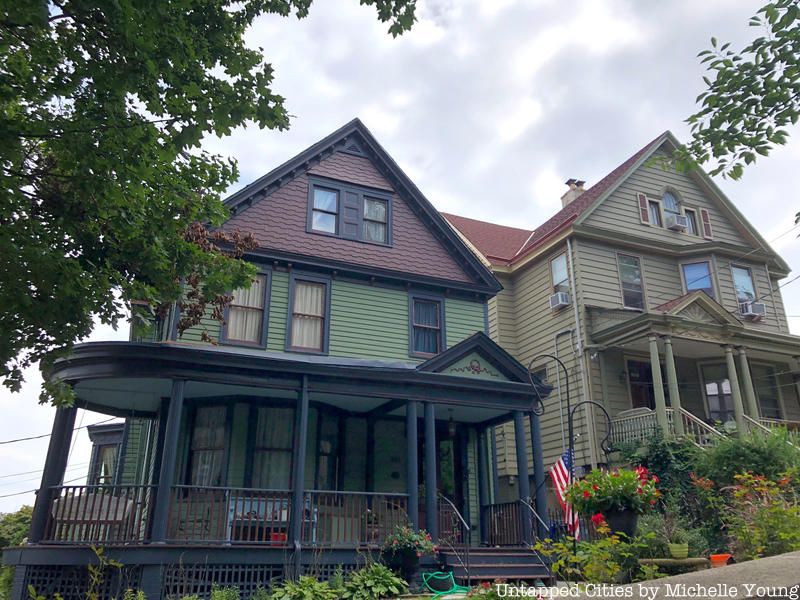
The residence of radical feminist and one-time New York State Poet Laureate Audre Lorde can be found in The St. Paul’s Avenue/Stapleton Heights Historic District at 207 St. Paul’s Avenue. Lorde lived here from 1972 to 1987 with her partner, Frances Clayton, and Lorde’s two children. This fact is included in the district’s 2004 designation.
In this, Lore produced important works such as Coal (1976), The Black Unicorn (1978), The Cancer Journals (1980), and Zami: A New Spelling of My Name (1982). The 1898 neo-Colonial-style house was designated an individual landmark in 2019.
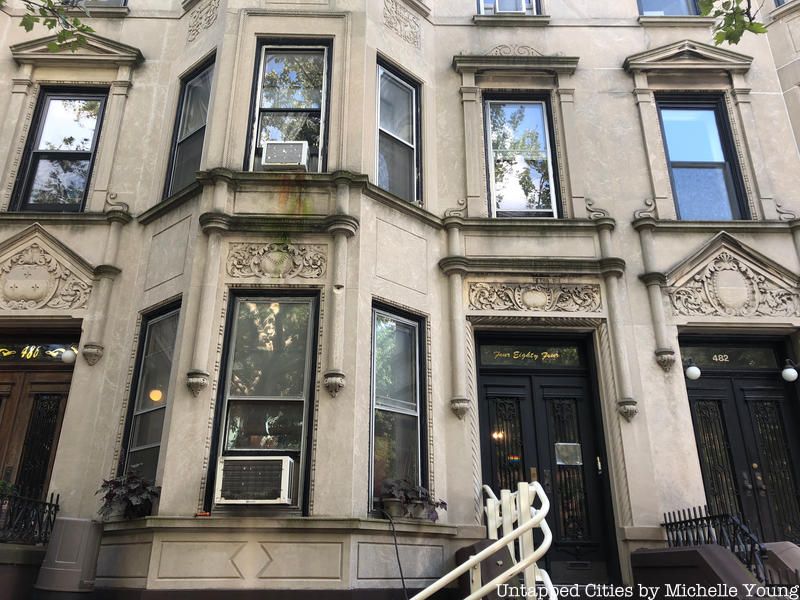
The Lesbian Herstory Archives, a research facility/community center/museum, is located in the Park Slope Historic District at 484 14th Street in Brooklyn. The Archives were founded in 1974 at the Upper West Side apartment of Joan Nestle and Deborah Edel and were moved to the Park Slope location in 1993 (which explains why it’s not listed in the 1973 designation). The archives preserve a wide variety of documents dating from the 1950s to the present.
Inside the archives, you will find “periodicals, files on lesbian activist groups, audio-visual materials, oral histories, and the personal and professional papers of lesbians from a diversity of cultural, ethnic, and class-based communities,” says the LPC. Organizations such as Daughters of Bilitis, the Salsa Soul Sisters, and the papers of famous activists like Barbara Gittings, Mabel Hampton, and Audre Lorde are all preserved in the archives. In 2022, the building was designated an individual landmark.
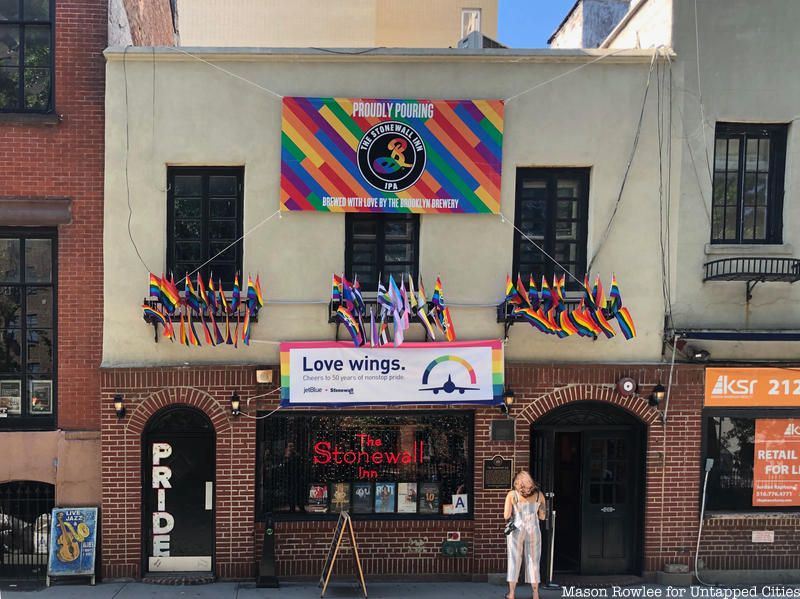
The Stonewall Inn at 51-53 Christopher Street is one of the most famous LGBTQ+ landmarks in New York City. Originally built as stables in the 1840s as stables, the building became a gay bar in 1967. The bar was the site of the 1969 Stonewall Rebellion, a five-day uprising that erupted after a police raid. Designated an individual landmark in 2015, the bar was the birthplace of Pride celebrations, which began as Christopher Street Liberation Day on the first anniversary of the rebellion.
Located at 243 West 20th Street in Chelsea, the Women’s Liberation Center was designated as an individual landmark in 2019. The building was originally constructed as a firehouse in 1866. From 1972 to 1987 it was home to various lesbian and feminist organizations including Lesbian Feminist Liberation, “an organization that protested bigoted media representations of lesbians, fought to raise the visibility of women at LGBTQ+ political rallies, and was a key early supporter of the City Council bill forbidding discrimination on the basis of sexual orientation.”
Next, read find more important LGBTQ+ Sites in NYC
Subscribe to our newsletter